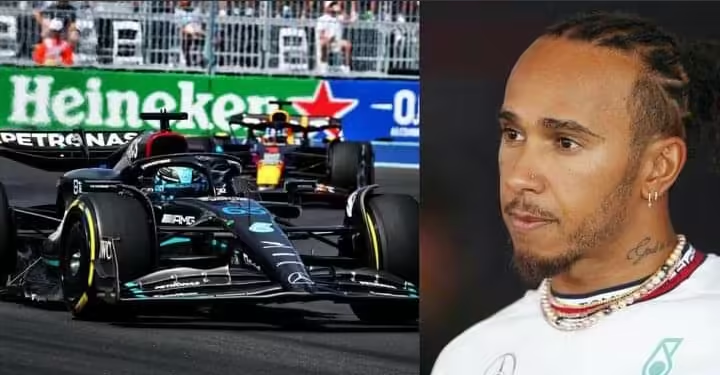The Mercedes W15, the latest iteration of the Silver Arrows’ Formula 1 car, has been a focal point of discussion within the motorsport community, particularly regarding how its upgrades have seemingly benefited Lewis Hamilton more than his teammate George Russell. Mercedes has been transparent about the reasons behind this, shedding light on the characteristics of the W15 and its compatibility with Hamilton’s driving style.
**1. Aerodynamic and Mechanical Balance:**
One of the key areas where the W15 has seen significant improvement is in its aerodynamic and mechanical balance. The car has been engineered to provide better stability through corners and more efficient downforce generation. Hamilton, known for his precise and aggressive cornering technique, has been able to extract the maximum performance from these upgrades. The improved aerodynamic package aligns well with Hamilton’s ability to manage tire wear and maintain higher speeds through mid-corner phases, something he excels at, giving him an edge over Russell.
**2. Experience with Mercedes Systems:**
Hamilton’s extensive experience with Mercedes’ systems and setups also plays a crucial role in his ability to adapt quickly to changes. Over the years, Hamilton has developed a deep understanding of how to fine-tune the car’s settings to suit his driving style. With the W15, this experience has allowed him to capitalize on the upgrades more effectively than Russell, who, despite his talent, is still relatively new to the team’s intricacies. Hamilton’s feedback during the development phase was also instrumental in shaping the upgrades, naturally leading to a car that suits him better.
**3. Driving Style Synergy:**
The W15’s upgrades have created a synergy with Hamilton’s driving style. The car’s enhanced rear stability and improved power delivery match Hamilton’s preference for a car that is stable yet responsive, allowing him to push the limits with confidence. Russell, on the other hand, tends to prefer a car with a more neutral balance, which might explain why the same upgrades haven’t provided as noticeable an advantage for him. The W15’s setup favors Hamilton’s late-braking and aggressive corner entry, further highlighting the difference in how each driver benefits from the upgrades.
**4. Adaptability to Changing Conditions:**
Hamilton’s ability to adapt to changing track conditions has also been amplified by the W15’s updates. The car’s improved aerodynamics and power unit performance allow for better adaptability across different circuits and weather conditions. Hamilton’s vast experience in various race scenarios means he can quickly adjust his driving approach to make the most of the W15’s strengths, a factor that has been particularly evident in mixed or challenging conditions.
**5. Psychological Edge:**
Finally, the psychological aspect cannot be ignored. Hamilton’s record-breaking career and his status as a seven-time world champion naturally instill a level of confidence that can translate into better performance. The W15 upgrades, having been developed with his feedback, might have also provided Hamilton with a mental edge, knowing that the car is evolving in a direction that plays to his strengths.
**Conclusion:**
In conclusion, the W15’s upgrades have been more beneficial to Lewis Hamilton due to a combination of factors: the car’s aerodynamic and mechanical setup aligning with his driving style, his extensive experience with Mercedes, and his ability to adapt to various conditions. While George Russell is undoubtedly a rising star, the W15’s characteristics, shaped significantly by Hamilton’s input, naturally give the veteran driver a slight advantage in exploiting the car’s full potential.
